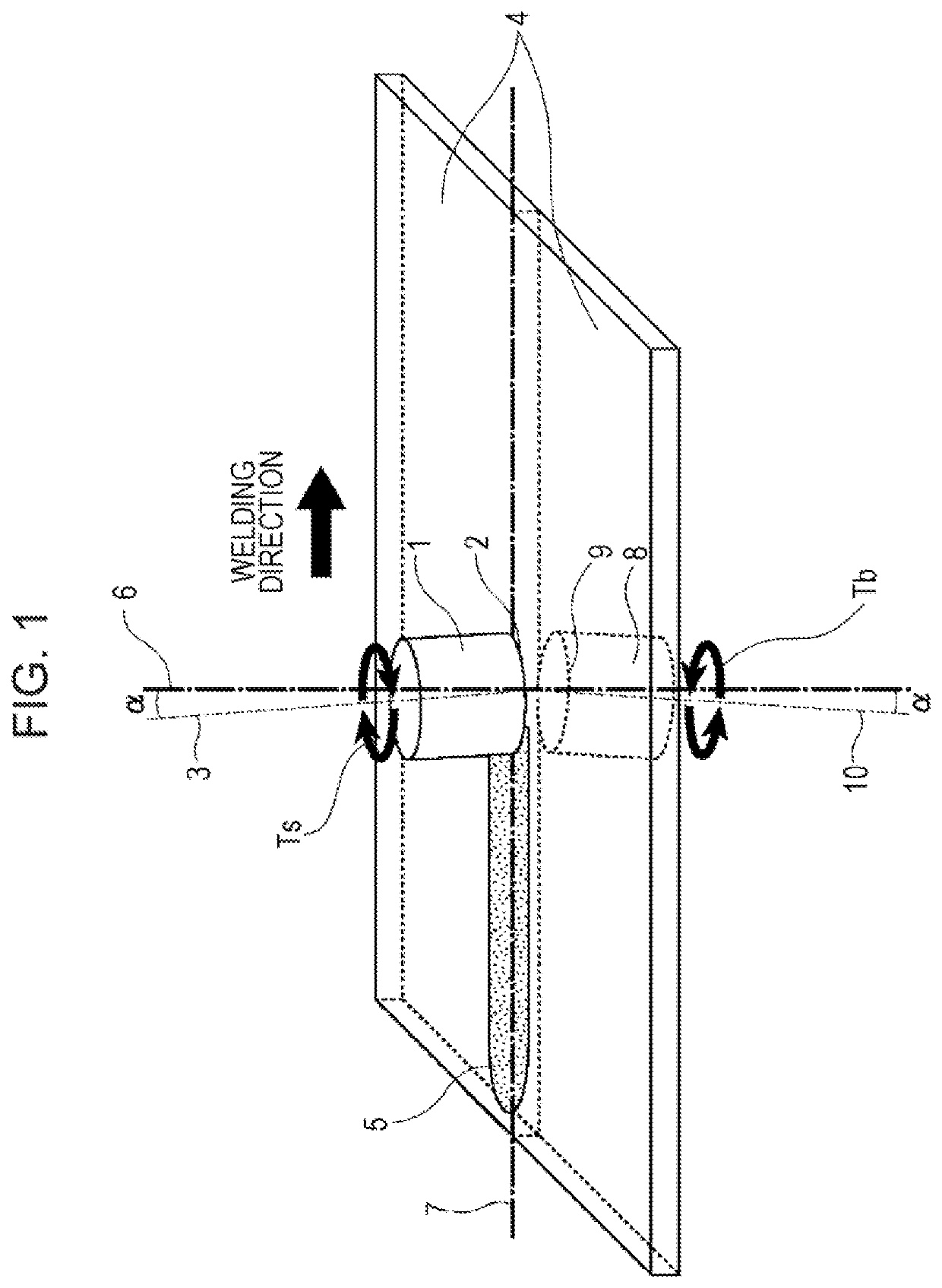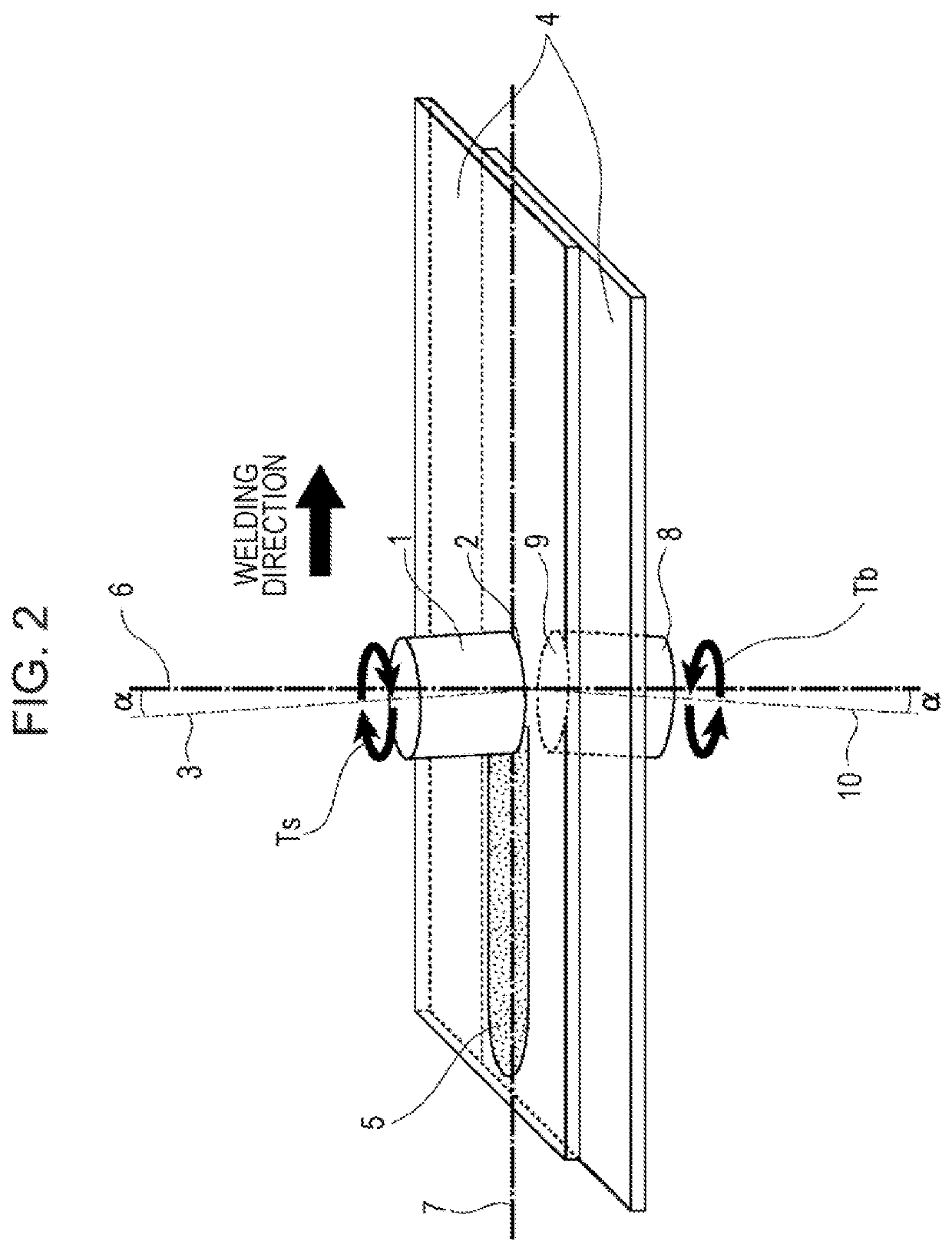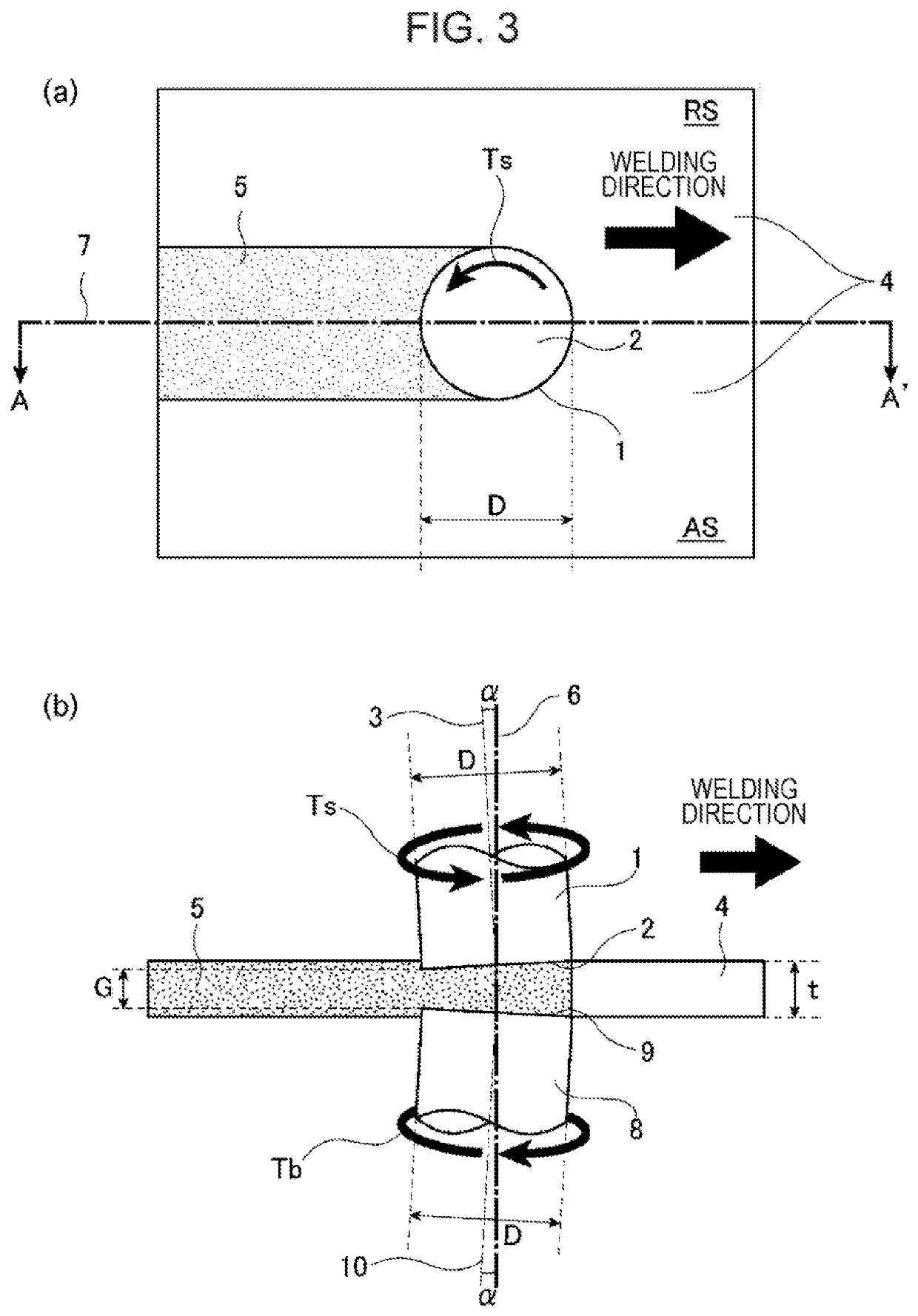Rotating tool for double-sided friction stir welding, double-sided friction stir welding apparatus, and double-sided friction stir welding method
a technology of rotating tools and friction stirs, which is applied in the direction of welding apparatus, metal-working equipment, manufacturing tools, etc., can solve the problems of insufficient plastic flow, weld failure, and the welding technique does not consider any application to welding metal plates, so as to reduce increase the length of each vortex
- Summary
- Abstract
- Description
- Claims
- Application Information
AI Technical Summary
Benefits of technology
Problems solved by technology
Method used
Image
Examples
first embodiment
[0081]As illustrated in FIG. 5(a) and FIG. 5(b), each of the rotating tools 1 and 8 according to the first embodiment of the present invention ends with circular peripheries, and each of these ends is formed of simply the end portion 11 having the planar shape 11a. Each of the end portions 11 formed in the planar shape has an end surface that comes into contact with the metal plates and that is formed of a single planar surface perpendicular to the rotation axis of a corresponding one of the rotating tools 1 and 8. Unlike a rotating tool of the related art, each of the end surfaces does not have a probe protruding toward the metal plates. In addition, as illustrated in FIG. 5(b), in each of the rotating tools 1 and 8, the above-mentioned vortex-shaped (spiral-shaped) stepped portions 12, which extend in the direction opposite to the rotation direction, can be formed in one or more tiers in the end portion 11. Note that the step portions 12b or the groove portions 12c, which have bee...
second embodiment
[0082]As illustrated in FIGS. 6(a) and 6(b), the rotating tools 1 and 8 of the second embodiment have circular ends each of which is formed of only the end portion 11 having the convex curved shape 11b, and these ends of the rotating tools are convexed. Although a rotating tool of the related art includes a probe protruding toward metal plates and has a discontinuous shape formed of a shoulder portion and the probe, each of the end portions 11 having the convex curved shape has a continuous shape without having a probe and forms an approximately uniform inclined surface. In other words, each of the end portions 1 having the convex curved shape has an end surface that comes into contact with the metal plates and that is formed of a single curved surface (a parabolic surface, a prolate surface, or a spherical surface) being convexed in the direction toward the center, and the end surface forms a curve having an approximately uniform radius of curvature in a cross-sectional shape inclu...
third embodiment
[0085]As illustrated in FIGS. 7(a) and 7(b), the rotating tools 1 and 8 of the third embodiment have circular ends each of which is formed of simply the end portion 11 having the concave curved shape 11c, and these ends of the rotating tools are concaved. Although a rotating tool of the related art includes a probe protruding toward metal plates and has a discontinuous shape formed of a shoulder portion and the probe, each of the end portions 11 having the concave curved shape has a continuous shape without having a probe and forms an approximately uniform inclined surface. In other words, each of the end portions 1 having the concave curved shape has an end surface that comes into contact with the metal plates and that is formed of a single curved surface (a parabolic surface, a prolate surface, or a spherical surface) being concaved in the direction toward the center, and the end surface forms a curve having an approximately uniform radius of curvature in a cross-sectional shape i...
PUM
| Property | Measurement | Unit |
|---|---|---|
| diameter | aaaaa | aaaaa |
| thickness | aaaaa | aaaaa |
| inclination angle | aaaaa | aaaaa |
Abstract
Description
Claims
Application Information
 Login to View More
Login to View More - R&D
- Intellectual Property
- Life Sciences
- Materials
- Tech Scout
- Unparalleled Data Quality
- Higher Quality Content
- 60% Fewer Hallucinations
Browse by: Latest US Patents, China's latest patents, Technical Efficacy Thesaurus, Application Domain, Technology Topic, Popular Technical Reports.
© 2025 PatSnap. All rights reserved.Legal|Privacy policy|Modern Slavery Act Transparency Statement|Sitemap|About US| Contact US: help@patsnap.com



